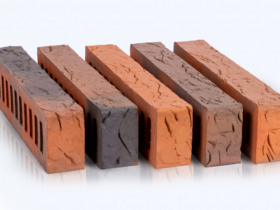Finally, after considering the main techniques of the architectural composition – proportions, scale, symmetry, rhythmic constructions, etc. D., – Obviously, it is necessary to talk about additional means of improving the artistic qualities of buildings. In the long practice of design and construction, funds have been determined, the skillful use of which significantly affects the formation of an architectural image. These are quite specific concepts arising from the physical properties of mats: texture and color. Texture (lat. Factura – processing, structure) is the qualitative state of the surface of the building material, product or structure. By definition a. M. Sokolova, the following varieties of texture are distinguished: 1. The state of the surface does not depend on the certain properties of the material, but rather associated with the auditory or tactile sensations – the bearing, rough, grain, polished, matte, etc. P. This texture can be called abstract. It can have a variety of materials or processed surfaces. 2. The natural texture characteristic of a particular MA-core and depending on its qualities (glass, obsidian (glass-item), pumice, tuff (spongy), etc. D.). 3. The state of the surface depends on the nature of its processing. In this case, the same material may have a different texture. So, granite with a natural unprocessed front surface has a gross, picturesque texture called “rock” or “fur coat”. The same granite treated with Teska of varying degrees of size can acquire a coarse -grained or fine -grained, rough or groove texture. An even more thinly processed surface can be obtained by grinding, as a result of which it becomes a smooth matte. With further processing, the surface acquires a casual texture with a slight gloss and, finally, a mirror polite-vanned. 4. The texture of large planes, say walls, can be obtained by working out relief, small details and divisions. This type of texture no longer depends on the properties of specific materials. It includes: a) relief surface breakdown into quadras (large stones, blocks) with cutting or increased seams (rustes); b) holey, lattice or mesh surface structure.









